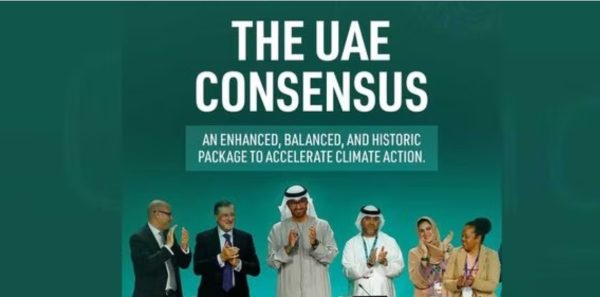 Dr.Seema Javed
Dr.Seema JavedThere are new signals that developing countries will be supported in the energy transition, adaptation, and addressing loss and damage in the final global stocktake text(GST) at COP28. Most of the finance mobilisedat COP28 is left in pledges.
But it is barely scratches the surface of what is required. So continuing the work on financing sources will be key in 2024.
The two main questions dictating the finance negotiations .
Financial system transformation
Progress has been made this year on reforming the international financial architecture with growing support from the World Bank and International Monetary Fund (IMF) on reforming multilateral financial institutions to achieve sustainable growth and prosperity for all of its 190 member countries.
It does so by supporting economic policies that promote financial stability and monetary cooperation, which are essential to increase productivity, job creation, and economic well-being. The COP28 text gives a signal that can be used to push the multilateral development banks( MDBs) to do more and better.
The agreement also asks shareholders to provide MDBs with the financial capacity to act, which is a nod towards the need for capital increases, a key component of the finance architecture reform. Additionally, while China wanted to avoid the inclusion of debt, there is a mention of the limited fiscal space that constrains developing countries, and this can be read
as a need for grant-based, highly concessional finance and for countries to be relieved from the mounting debt pressure.
Adaptation finance
The last OECD report on climate finance showed that while the rest of climate finance kept
growing, adaptation went down by 14% ($4bn) in 2021, so ensuring that adaptation finance
is scaled up is a critical issue for next year.
The text recognises that adaptation finance needs to be significantly scaled up, beyond developed countries' doubling of adaptation finance by 2025 (as agreed at COP26). Developed countries are asked to prepare a report on doubling by COP29, which is an insufficient response to the adaptation finance gap but it is something that should provide the path from the 2021 drop to 2025.
Loss and damage finance
While COP28 opened with the establishment of the loss & damage fund, the text has little
reference to the scale of the funding that is required, though it is now included in the finance
section. A full analysis is here from the Loss & Damage coalition.
In total pledges of $655.9m were made to the Loss and Damage Fund during COP28 –
though the Presidency and the text confuses pledges to the Fund with other funding
arrangements, citing a $792m figure that applies to all loss and damage pledges. See this
NRDC tracker for the full breakdown.

Fossil fuel subsidies
The language on subsidies turned into a call for “phasing out inefficient fossil fuel subsidies
that do not address energy poverty or just transitions”, which effectively expands the type of
subsidies that should be kept. The language on inefficient subsidies is also nothing new: the
G20 has called for phasing out inefficient fossil fuel subsidies since 2009 and it hasn’t led to
any progress.
Avinash Persaud, Special Climate Envoy to PM Mottley of Barbados: “When the dust settles and dawn breaks, this will be seen as one of the most historic COPs.
We have operationalised a loss and damage fund, recapitalised the Green Climate Fund and
orchestrated an international climate finance system that prepares for new levies alongside
emboldened development banks and new private sector flows. Today, we have committed to
triple renewable investments and have a just transition from fossil fuels.
 Jubilee Post News & Views
Jubilee Post News & Views





